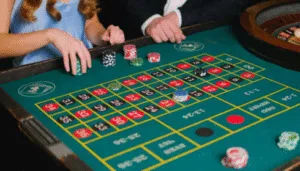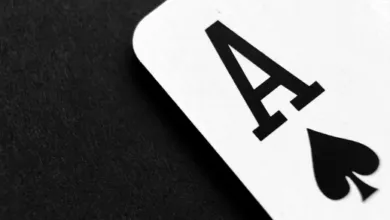The Numbers That Never Fade: Exploring the Fascinating World of Satta Matka

There’s a certain poetry in chance. Maybe that’s why people have always been drawn to games of luck — where numbers, timing, and intuition all collide in unpredictable ways. Among those timeless games, none has left a mark quite like Satta Matka. It’s more than a game; it’s a piece of Indian history, stitched with risk, suspense, and stories that still echo through generations.
It’s not about cards or dice. It’s about numbers — small, ordinary numbers that somehow became a symbol of hope, rebellion, and sometimes heartbreak. The game has evolved from whispers in Mumbai’s bustling streets to glowing screens across the internet, but the heartbeat behind it? That’s never changed.
From Cotton Rates to Clay Pots
The story begins in the 1960s. Back then, betting wasn’t about charts or apps — it was about cotton. Traders would place bets on the opening and closing rates of cotton prices being sent from the New York Cotton Exchange. But when that system was banned, Indians being Indians, they invented their own version.
Instead of relying on foreign markets, random numbers were drawn from an earthen pot — or matka. That’s where the name was born. The game spread quickly through Mumbai’s working-class neighborhoods, capturing imaginations and creating a culture that blended calculation, luck, and excitement in equal measure.
It wasn’t glamorous. It was raw, local, and honest — a game played by those who believed a lucky number could shift their fate.
The Culture of Numbers
What’s interesting about Matka isn’t just how it’s played, but why it’s played. People weren’t simply chasing money; they were chasing hope. A factory worker, a vendor, or a taxi driver — all could dream of changing their life overnight.
The system was simple: pick a number, place your bet, and wait. Yet, beneath that simplicity was an entire culture — a language of charts, formulas, and intuition. Old-timers claimed they could “feel” the next number coming, like fortune-tellers predicting the future.
And when results were announced, it was a festival of emotions — cheers, disbelief, laughter, and loss, all happening in the same moment. For many, it was the highlight of their day, the rush that made life a bit more thrilling.
The Rise, Fall, and Reinvention
Of course, fame comes with attention — and not all of it good. As Matka grew, so did government crackdowns. Police raids became common, and the original system went underground. But even bans couldn’t silence it completely.
That’s the thing about games rooted in emotion — they find a way to survive. Slowly, Matka reinvented itself. What was once drawn from pots began appearing in newspapers, and later, on the internet. The names changed — Kalyan, Worli, Main Ratan — but the essence stayed the same.
The modern-day digital era gave it new life. Today, SattaMatka is accessible through websites, apps, and even social media. What was once whispered in alleyways is now a few taps away. It’s evolution at its finest — old-world thrill meeting new-age technology.
Why It Still Holds Power
Some might wonder, why does a decades-old game still survive when there are casinos, online lotteries, and a thousand other ways to gamble? The answer is simple: connection.
Matka isn’t just about money; it’s about belonging to something. It’s about nostalgia for those who grew up hearing their fathers or uncles talk about it. It’s also about rebellion — a quiet defiance of life’s predictability.
It speaks to a universal truth: people crave uncertainty. We don’t always want to know what’s next. The suspense, the guesswork, the heartbeat before results — it’s addictive, yes, but also strangely grounding. It reminds us we’re human, driven by hope and curiosity.
The Soul of Indian Satta
In many ways, Indian Satta mirrors the country it was born in — chaotic, colorful, unpredictable, and endlessly fascinating. It’s not just a game; it’s a reflection of India’s relationship with luck and destiny.
Here, people check horoscopes before weddings, consult astrologers for business, and tie red threads for protection. So it’s not surprising that a numbers-based game became woven into everyday life. Matka wasn’t foreign; it felt familiar — another way to flirt with fate.
Even today, you’ll find small pockets across the country where people still play in secret. They use smartphones instead of paper slips, but the excitement remains the same. That’s the magic of tradition — it bends, but it doesn’t break.
The Psychology of Chance
Let’s be honest: the rush of chance is universal. Whether it’s spinning a roulette wheel or checking lottery numbers, humans love uncertainty. It’s the “what if” that keeps us hooked.
Matka taps directly into that instinct. It doesn’t require wealth, skill, or education — just belief. Everyone gets an equal shot at fortune. That’s what makes it strangely democratic.
But it’s also a double-edged sword. For every person who wins, there’s another who loses more than they can afford. That’s where the danger lies — in the thin line between fun and obsession. Yet, even that complexity adds to its allure. People don’t play because it’s rational. They play because it feels alive.
The Digital Transformation
If you think Matka died out, you haven’t seen its online revival. Digital platforms have turned it into a structured, accessible experience. You can track results in real-time, join communities, and even learn “strategies” from self-proclaimed experts.
The design may have changed, but the spirit hasn’t. Players still trust their instincts, still believe in lucky numbers, and still chase that fleeting rush of uncertainty. The digital age has simply made it easier — faster, sleeker, and more global.
That said, modern platforms are now mixing entertainment with awareness. Some even promote responsible play, trying to balance tradition with safety. It’s a small but meaningful shift toward sustainability in a space once ruled by chaos.
Why It Endures
Every generation finds its version of thrill. For some, it’s stock trading. For others, it’s crypto. But deep down, all of it stems from the same impulse — taking risks, predicting outcomes, testing fate.
That’s why Matka remains relevant. It’s not about nostalgia alone; it’s about timeless human behavior. We’ve always wanted to believe we can outsmart luck. That’s what keeps the flame alive.
The faces have changed. The format has changed. But the feeling — that electrifying mix of fear, excitement, and hope — remains untouched.
The Final Thought
In the end, Matka isn’t just about numbers. It’s about stories — of triumphs, losses, and everything in between. It’s a reminder that chance, however unpredictable, is part of life’s rhythm.





